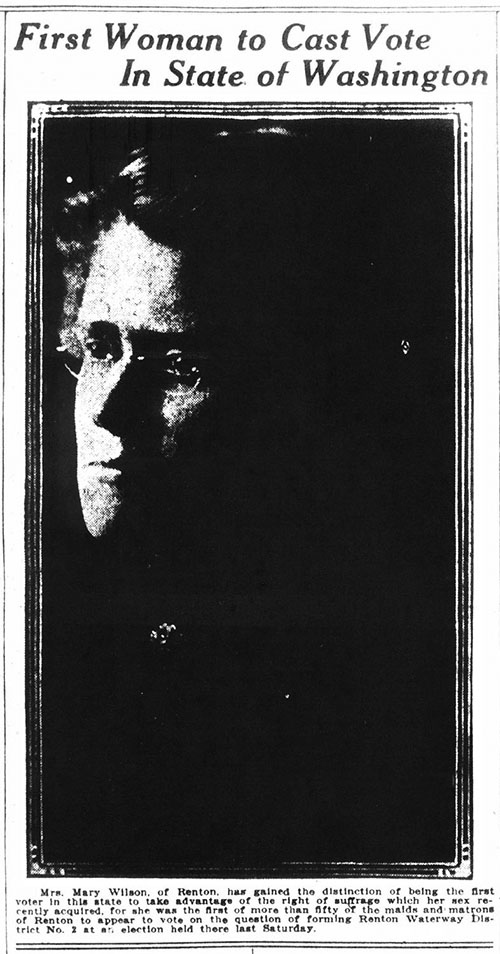
1854-1912: The Road to Suffrage

During Washington’s early territorial years, women were in short supply. The ratio of males to females was nine to one, prompting both the governor and a leading legislator to organize parties of single women to come to the territory as potential teachers and brides. When the population grew and more women arrived to share in the task of building new communities on the Northwest frontier, they also participated both directly and indirectly in the development of the political process.Despite the failure of the Arthur Denny’s 1854 resolution to give white females the vote, women helped to shape Washington government in many ways. Sometimes individually, but more often in organized clubs or lobbying efforts, women were active in their communities and influenced public policy on issues that ranged from health and education to working conditions and temperance.
Successes and Failures
Suffrage continued to dominate women’s reform agenda for the next several decades, as winning the right to vote seemed the only way to ensure full participation in the political life of the state. Yet when national suffragist leader Susan B. Anthony toured the region in 1871 with Abigail Scott Duniway, an outspoken Northwest activist, they had to answer those who felt that the vote would undermine women’s "domestic supremacy" and moral values for what one Washington newspaper called the "questionable privilege of sharing with men in the turmoil and strife of political elections" (Washington Standard, Aug 19, 1871).
Despite these objections, Washington became the third territory (after Wyoming and Utah) to approve suffrage in 1883, and for a short time women used their ballots to support temperance and other moral causes. The powerful saloon lobby pressured the courts, which in an 1887 decision found the suffrage law unconstitutional. A new measure giving women the vote was defeated along with prohibition when statehood was attained in 1889, although women did win the right to vote in school elections the following year.
Suffrage Achieved
Under the new constitution, the inability to vote kept women from serving in the Legislature, so suffragists continued their campaign. Their work was rewarded in 1910, when the state constitution was amended to guarantee women suffrage. The success of the suffrage campaigns in Washington added momentum to efforts in other Western states, and the eventual adoption of the 19th Amendment to the U.S. Constitution in 1920. Yet Washington women did not see the ballot as an end in itself, but as an essential step toward equal rights and full participation in political and public life.
-
Photo:
"Mrs. Mary Wilson, of Renton, has gained the distinction of
being the first voter in this state to take advantage of the right of
suffrage which her sex recently acquired, for she was the first of more than
fifty of the maids and matrons of Renton to appear to vote on the question
of forming Renton Waterway District No. 1 at an election held there last
Saturday."